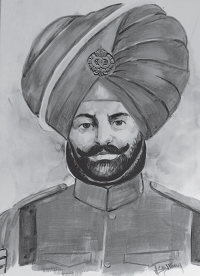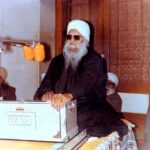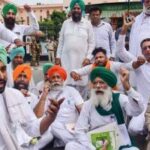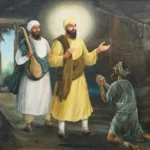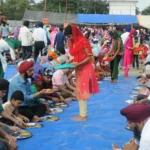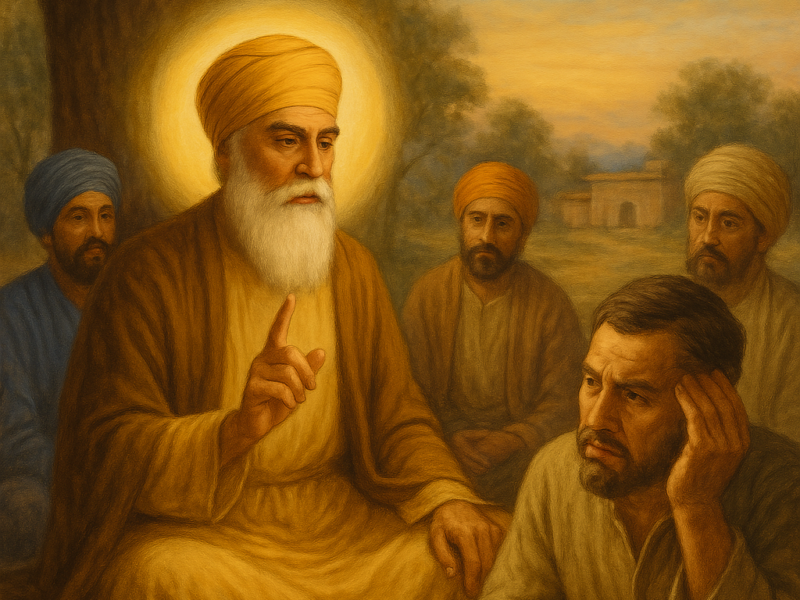The Battle of Saragarhi is regarded as the foremost last stand in the army history of the world. Twenty-one soldiers were placed against over 8,000 Afridi and Orakzai tribals but they tried to retain the fort for 7 hours. Despite being outmanned, the forces of the 36th Sikhs (now 4 Sikhs), headed by Havildar Ishar Singh, battled till they died, slaughtering 200 tribals and wounded 600 others.
Ishar Singh was born in the year 1858 in the village of Jhorarh near Jagraon, Punjab, and enlisted in the Punjab Frontier Force in 1876, eventually transferring to the 36th Sikhs in 1887. He wedded Jiwani Kaur in 1893, little realizing that he’d never see her again because his regiment was sent to the northwest Frontier to protect the frontier from Afghans within a year of their wedding. While Ishar Singh’s devotion to duty conduct and battlefield determinations were sound, and the commands passed on to him via heliograph by his senior staff – who were watching the battle of Saragarhi from another two forts nearby – were faithfully carried out, he was far from a blind follower of his superior officers.
The Pathans cleverly set fire to the neighboring shrubs. The Saragarhi station was engulfed in smoke, rendering the Sikh soldiers unable to locate the intruders. Fort Lockhart quickly alerted the Sikhs of the Pathans’ breach, and Havildar Ishar Singh ordered the surviving soldiers to rush towards the interior layer. The following act is widely regarded as one of the greatest acts of courage in war history. Havildar Ishar Singh, who was now seriously injured, ordered two men to take him to the breach so that he could protect the other soldiers, although for a short time. When they arrived, they all opened fire and dealt a heavy blow to the Pathans.
Then came among the most spectacular and mind-boggling battles between Sikh troops and Afghan Pathans. The Pathans had just five troops left after breaching the Saragarhi position, four on the inner side and one (Sepoy Gurmukh Singh) at the sisignalingower. The valiant Sikh soldiers, on the other hand, gave the Pathans a hard time once more as they formed an all-around defensive stance with their swords/bayonets, striking severe blows to the opposing Pathans.
When they realized they wouldn’t be able to get any support from Fort Lockhart, Havildar Ishar Singh called a meeting and asked all the men whether they wanted to quit their posts for the sake of survival or keep the fort and fight bravely. The soldiers firmly preferred the latter. Saragarhi then responded to Fort Lockhart with the phrase “understood.”
Table of Contents
ToggleIshar Singh’s encouraged his men
The Pathans sought to rush the post at the start of the attack, with scores of standards flying and ready to raze all in their way in the fire of their discontent. The soldiers within the post had already been warned and were bracing themselves for the onslaught of almost 10,000 Pathans. Havildar Ishar Singh assessed the gravity of the situation and immediately assumed charge. He was an experienced soldier who understood how to motivate the 20 soldiers who looked to him for leadership. He is claimed to have quoted Guru Gobind Singh’s lyrics about each of them being equal to 125,000 adversaries, and the Pathans they had to battle were a fraction of that.
He reminded them of Maharaja Ranjit Singh’s magnificence and the importance of honoring his heritage on that particular day. He told the story of the courageous Hari Singh Nalwa, who had battled the Afghans not long before on these same hills. His comments were enough to stoke a fire in the hearts of the 20 young Sikh troops, inspiring them to offer everything they had to the impending battle, so making military history.
The final Sikh soldier to perish on the battlefield
After the four valiant troops were dead, Sepoy Gurmukh Singh hailed Fort Lockhart, requesting permission to join the combat because he was the only one left. After that, he descended from the tower, rifle in hand, and joined the fight. ‘Jo Boley So Nihaal, Sat Sri Akal!’ said the 19-year-old Gurmukh (the youngest of the group). Gurmukh Singh fought 20 Pathans on his own before succumbing.
The death toll among Pathans astounded the British
The Sikh warriors’ valiant defense provided the two forts, Fort Lockhart and Fort Gulistan, just about enough time to plan for invasion or attack. Aside from that, the Pathans suffered 180 losses as a result of the Sikh soldiers’ actions. According to some estimates, the Afghan Pathans’ number of deaths was around 600, based on the bodies discovered by reinforcement British forces surrounding Saragarhi.
Ishar Singh was an exceptional leader
Havildar Ishar Singh, a devout Sikh, led the squad, and his soldiers had complete faith in his skills and leadership. He was extremely knowledgeable about the Pathans’ combat abilities as well as their strategies. He was also well-versed in the region’s geology and topography.
The highest gallantry award
The Indian Order of Merit (comparable to the Param Vir Chakra of today) was bestowed aafterwardto to the 21 Sikh troops who valiantly died fighting in the Battle of Saragarhi. It was the greatest gallantry medal an Indian soldier can get at the time. All of the troops were from Punjab’s Majha area.
Each year on September 12, all troops of the Sikh Regiment commemorate the Battle of Saragarhi with Saragarhi Day, also recognized as Regimental Battle Honours Day. Not only that, but Sikhs all across the world commemorate Saragarhi Day.
The battle is remembered as among the greatest ‘final stands’ in military history, as a small force of 21 brave Sikh troops met and fought off 10,000-12,000 Pashtun invaders from the Afridi and Orakzai tribes.
“It is no hyperbole to state that the forces which possess the heroic Sikhs cannot face defeat in war,” Queen Victoria said in a declaration to the British Parliament in 1987, describing the soldiers’ valor and heroism admirably.
